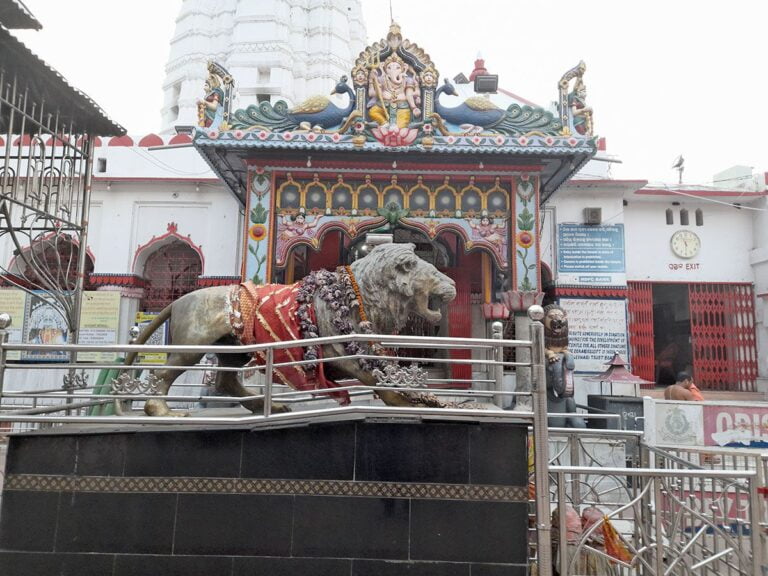Kamalashile Temple | Shri Brahmi Durgaparameshwari Temple
Kamalashile Temple! Officially called the Shri Brahmi Durgaparameshwari Temple, this lovely ancient temple is hidden in the serene village of Kamalashile, way back in the verdant, verdant Western Ghats forests. You will discover this secret treasure in the Kundapur taluk of the Udupi district in Karnataka, India. Imagine a place where nature’s beauty meets divine energy, where stories from long, long ago feel as fresh as today’s morning dew. That’s exactly what the Kamalashile Temple offers!
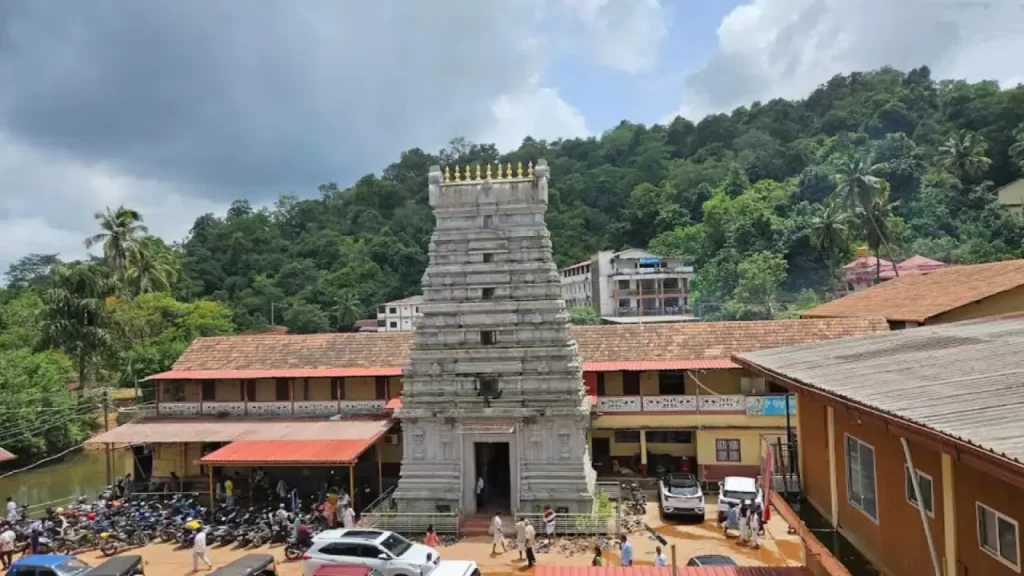
I’ve had the privilege of exploring so many wonderful sites, but the charm of the Kamalashile Temple, or the Shri Brahmi Durgaparameshwari Temple, is truly unique. It’s not just a collection of old stones; it’s a living, breathing testament to faith and devotion. So, let’s get ready to uncover the secrets and wonders of this sacred abode!
Contents
- 1 Kamalashile Temple History
- 2 Legend of the Temple
- 3 Importance of the Temple
- 3.0.1 Kamalashile Temple | Shri Brahmi Durgaparameshwari Temple
- 3.0.2 Famous Kollur Mookambika Temple: Discover the Unseen Powers
- 3.0.3 Huge Kodandarama Swamy Temple Ejipura is Echo of Ayodhya
- 3.0.4 Sri Bhoga Nandishwara Gudi: Famous 9 Century Nandi’s Abode
- 3.0.5 Nanjundeshwara Temple Mysore | Sri Srikanteshwara Temple
- 3.0.6 Shri Bettada Bhairaveshwara Temple
- 4 Architecture
- 5 Myths and Beliefs
- 6 Kamalashile Temple Timings
- 6.0.1 Crowded Days and Special Rituals:
- 6.0.2 Gundicha Temple: Discover Puri’s Divine “Aunt’s House”
- 6.0.3 750 Year Old Ananta Vasudeva Temple
- 6.0.4 Rajarani Temple Bhubaneswar: A Temple of Love and Beauty!
- 6.0.5 Mukteswar Temple Bhubaneswar
- 6.0.6 Lingaraj Temple: Odisha’s Architectural Marvel
- 6.0.7 Samaleswari Temple Sambalpur Odisha
- 7 Sites to See Near the Temple
- 8 How to Reach the Temple
Kamalashile Temple History
Let us travel back in time, several centuries back, to learn about the origins of the Kamalashile Temple. This temple is very old, so old that its precise origins are somewhat of a secret, passed down through generations. Try to envision those times when fierce kings and queens, compelled by their strong beliefs, would visit this very place to make their offerings to Goddess Brahmi Durgaparameshwari. This turned the Kamalashile Temple into a highly sacred spiritual hub for their kingdoms. Years turned into centuries, and saintly sages and pious devotees kept coming here in search of peace and blessings.
Did you know that this temple was once vibrant under the powerful Vijayanagara Empire? This was a great empire that governed a vast majority of South India. The rulers of this empire were superb patrons of religion and the arts, and particularly fond of and supportive of the Kamalashile Temple. They showered gifts upon it and assisted in making it even greater and prettier. This indicates how much worship of the Goddess here was important to them. To this day, the Kamalashile Temple has been lovingly maintained and rebuilt many times. It is like a great big storybook that gets new, lovely pictures added to it all the time, but the lovely story within never changes!

Legend of the Temple
And now, the exciting bit – the myths! All the old religious sites, particularly one like the Kamalashile Temple, have amazing stories behind them that tell us about its holy origins. The Kamalashile Temple has a really magical one. Imagine a period when a tremendously powerful and pesky demon by the name of Kamhasura was creating a huge ruckus everywhere. He had become enormously powerful with all his prayers and was even harassing the benevolent gods! Desperate for help, the gods prayed to Goddess Durga for her divine assistance. And what’s more? She showed up right here in Kamalashile!
The Goddess and the demon fought a great battle, a classic standoff! And lastly, Goddess Durga, with all her great divine power, slew Kamhasura and restored peace and harmony to the world. The sanctified stone, or Shila, in the Kamalashile Temple is said to be where she manifested and where her great divine power still abides. Let it be imagined that the Goddess herself selected this very place to show her strength and safeguard all beings. That’s why the central part of the Kamalashile Temple, known as the sanctum sanctorum, is so very holy, since it is said that the Goddess resides there eternally, showering her divine blessings on all those who visit to pray.
There is yet another lovely and touching story linked to this holy site, which is referred to in the Skanda Purana, one of our very ancient Hindu scriptures. This Purana informs us of a divine dancer named Pingala in Lord Shiva’s celestial dwelling, Kailash. On a particular day, she involuntarily refused to dance for Lord Shiva and Goddess Parvati, who, as gods, were extremely agitated and cursed her to be born as an ugly woman on earth.
Pingala was utterly grieved and prayed sincerely to Lord Shiva to release her from the curse. Seeing the sincere prayers of Pingala, Goddess Parvati, being full of immense mercy, descended to Earth and forgave her. She also informed Pingala that she would manifest herself as a Linga (a worshipful stone symbol) with her head resting upon it, here in Kamalashile.
It was not long when Pingala discovered a Linga along the Kubja River and started praying with all sincerity. The Goddess again appeared and affectionately explained to her that the river would always remain known as Kubja in commemoration of Pingala, and would annually miraculously inundate to purify her Linga form. Isn’t that a great tale? It reminds us that even if we commit errors, genuine penitence and devotion can yield tremendous divine favor. This strong affinity to the Kubja River is a special feature of the Kamalashile Temple.
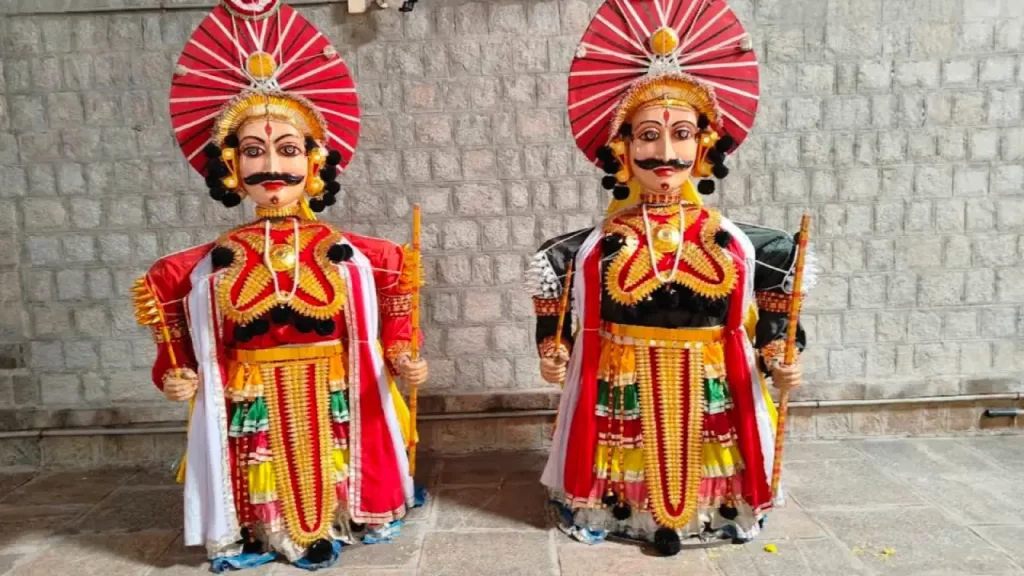
Importance of the Temple
So why is the Kamalashile Temple, or the Shri Brahmi Durgaparameshwari Temple, so amazingly important? Well, it’s more than just somewhere that people pray; it’s somewhere totally filled with divine energy and good vibes! Locals firmly hold the belief that if you pray here with a clean heart and true devotion, you will receive good fortune, your troubles will disappear, and you will experience a profound inner peace.
One of the truly one-of-a-kind and peculiar aspects of the Kamalashile Temple is that Goddess Brahmi Durgaparameshwari is worshiped in Linga form. And this holy Linga is thought to be a great union of three immensely significant and great goddesses: Maha Lakshmi (the goddess of wealth and prosperity), Maha Saraswati (the goddess of wisdom and knowledge), and Mahakali (the goddess of great power and strength). So, when you go to this Kamalashile Temple, you are indeed getting the blessings of all three great deities in one single, holy place! This makes the Kamalashile Temple stand out in a class of its own.
This temple is especially renowned for the unique poojas (worship ceremonies) and homas (sacred fire rituals) that are conducted to assist people in overcoming issues in life, including health problems, financial issues, and even mental anxieties. There is one very significant and heartwarming ritual that is conducted here, known as Annadana, which translates to offering free food to all devotees. It’s a lovely gesture of kindness, liberality, and devotion, and it reflects the essence of selflessness.
The pilgrims also take a sacred dip in the Suparnika River in the vicinity prior to entering the Kamalashile Temple. They feel this cleansing dip washes away all their impurities and makes their soul ready to receive the blessings of the Goddess. It’s really a spot where you can experience an overwhelming sense of peace, spiritual presence, and warmth.
Architecture
Now let’s just take a glance at how Kamalashile Temple, or Shri Brahmi Durgaparameshwari Temple, appears! It’s a great specimen of classic South Indian temple architecture, which is famous for its beauty and delicate details. Just think of entering a building filled with intricate carvings on stone buildings, tall entrance towers known as gopurams that appear to go up to the sky, and exquisitely ornamented pillars that depict stories from ancient Hindu lore. It’s like entering a gigantic, sacred picture book carved completely out of stone!
The most sacred portion of the Kamalashile Temple, where the idol of the Goddess (or the Linga in this instance) is placed, is decorated with beautiful carvings and often even with shiny golden accessories. In the temple complex, you’ll find smaller shrines for other significant gods, such as the elephant-headed Lord Ganesha and the brave Lord Subrahmanya. The serene Kubja River, also referred to as the Suparnika River, softly flowing in the vicinity, contributes to the temple’s tranquility, providing a peaceful and divine setting ideal for prayer and quiet reflection.
You’ll also certainly observe a majestic, impressive 75-foot-tall flagpole, a dhwaja sthamba, tall at the entrance of the Kamalashile Temple. This beautiful pole is constructed from one, enormous tree and is exquisitely draped in glittering silver plating, which is embellished with intricate carvings of different deities. Is that not just great? Two grand halls, referred to as mandapas, are also a part of the Kamalashile Temple, where devotees can comfortably sit, meditate, and pray. Each and every aspect of the Shri Brahmi Durgaparameshwari Temple Kamalashile is crafted to evoke a feeling of awe, respect, and profound devotion in each and every traveler.
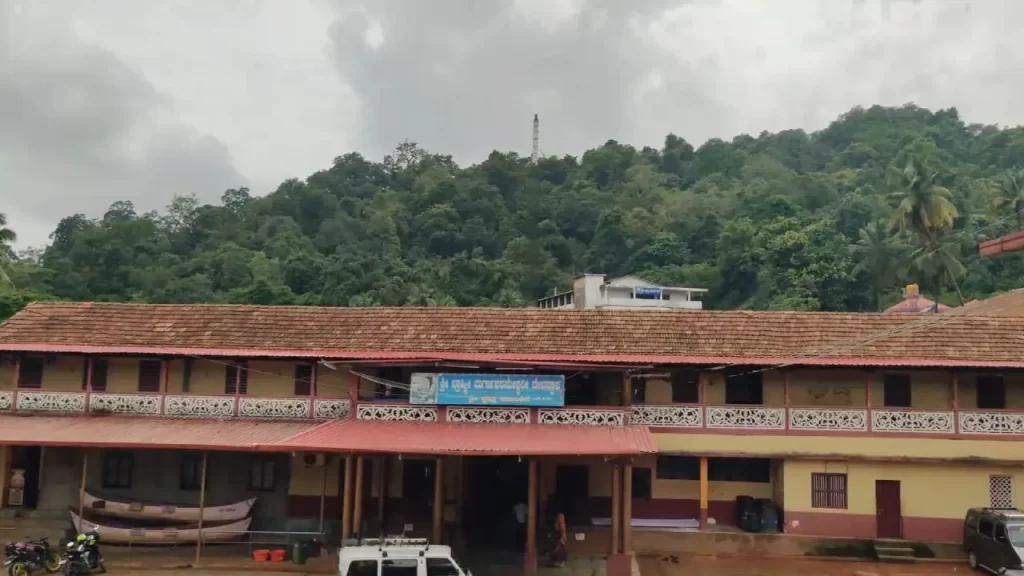
Myths and Beliefs
The Kamalashile Temple is one where ancient myth and strong convictions are interlaced, producing a rich, living history of religious experiences. One such intriguing belief, as described in the stories, is regarding the Kubja River itself. According to the legend of Pingala, the river is said to flood the Kamalashile Temple miraculously every year, washing away gently the Linga of the Goddess.
It is said that nobody really knows where this water originates or where it vanishes, and people add to the mystique and magic of the site. When this rare occurrence happens, followers flock to the Kamalashile Temple to bathe in these sacred waters, fully convinced that they have healing properties and grant wishes. It’s simply something miraculous and breathtaking to see!
There’s also a highly unique pooja that is done every night at the Kamalashile Temple, which is known as the ‘Salaam Puja’. This special pooja is a nostalgic gesture of respect to Hyder Ali and his son Tipu Sultan, who were dominant rulers and were known to have patronized and maintained this temple. It’s a lovely indication of how other cultures and religions have existed amicably together and respected one another in this country for so many centuries.
Another fascinating belief surrounding the Kamalashile Temple concerns the mruthika, or holy clay, placed on the Linga on certain sacred days (twice a month, on Ekadashi). This ancient, sanctified clay is subsequently fondly distributed among devotees as prasada (holy offering). It is mixed in water and consumed by people who consider it a potent, holy elixir that has the ability to heal all diseases and solve troubles. It is a strong evidence of the firm belief individuals possess in the supernatural power of the Goddess at the Kamalashile Temple.
A short distance away from the Kamalashile Temple, you’ll come across the enigmatic Suparshwa Cave. It’s said King Suparshwa used to meditate here, and even today, it’s believed that a tiger, which is the vahana of Goddess Durga, visits the cave every night! An extra fire is even set at the entrance of the cave to warm the animal. Both the stories, if they are to be read literally or symbolically, wonderfully exhibit the great respect and attachment people have to the divine as well as the natural world around the Shri Brahmi Durgaparameshwari Temple Kamalashile.
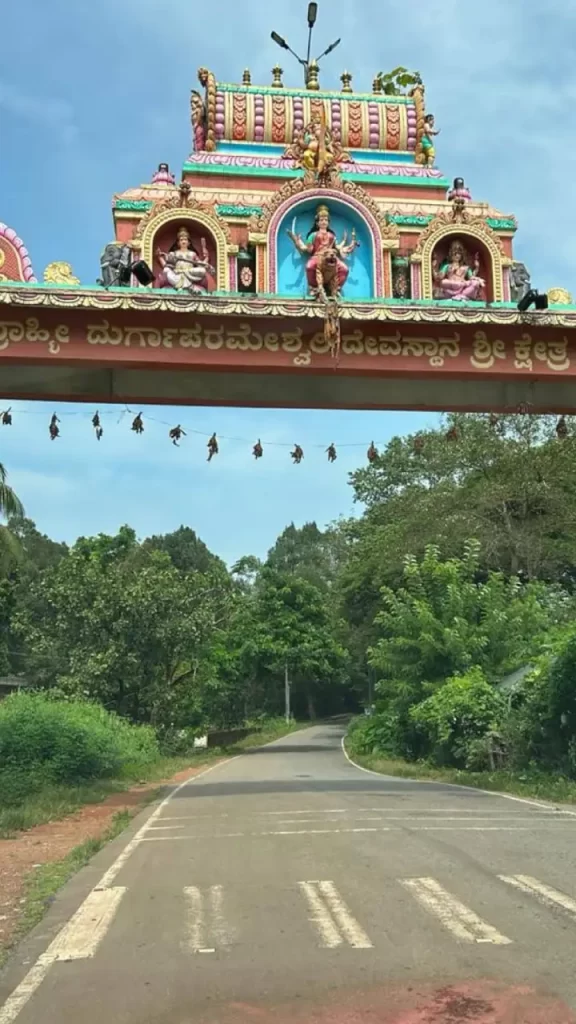
Kamalashile Temple Timings
All you great tourists preparing for your visit to the Kamalashile Temple, here are the timings in general:
The Kamalashile Temple remains open for Darshan (viewing of deity) from 6:00 AM in the morning to 9:30 PM at night.
Prathabisheka (an early morning ceremony) and Darshan start early at 6:00 AM.
Afternoon Maha Pooja (a grand worship ceremony) is done from 12:30 PM to 1:00 PM.
Evening Maha Pooja is done from 7:30 PM to 8:00 PM.
Prasadam (tasty, complimentary meals) are lovingly distributed in the afternoon between 12:30 PM and 2:30 PM, and also at night between 8:30 PM and 9:30 PM. This Annadana (offering of food) is a very benevolent attempt, whereby all the devotees, irrespective of their origins, are able to share in the blessings and hospitality of the Kamalashile Temple.
Crowded Days and Special Rituals:
The Kamalashile Temple naturally attracts a large number of devotees, especially during important Hindu festivals. The most significant and vibrant festival celebrated here is Navaratri, which is a grand 10-day celebration dedicated to Goddess Durga. During Navaratri, the Kamalashile Temple is magnificently decorated, and special poojas, devotional music, and cultural programs fill the air. It’s a truly spectacular and lively event, drawing thousands and thousands of pilgrims from far and wide!
Some other significant festivals attracting great numbers of pilgrims to the Kamalashile Temple are Deepavali (festival of light), Makar Sankranti, and Ugadi (Karnataka New Year). The Brahma Rathotsava (chariot festival) held every year, in which the god is carried in a grand procession, is a highly popular and festive occasion. If you want to see Kamalashile Temple at its best and most lively, these are the days to visit! But if you’re the type who enjoys a quiet and peaceful experience, then it’s best to steer clear of these peak festival days.
The Kamalashile Temple also conducts special yearly homas and parayanas (recitations of sacred texts) such as Chandika Shanti, Chandika Parayana, and Durga Shanti homas. These are auspicious rituals conducted for general well-being, peace, and prosperity, and they contribute to the deep spiritual ambiance of the Shri Brahmi Durgaparameshwari Temple.
Sites to See Near the Temple
As you’re seeing the grand Kamalashile Temple, you may also want to visit some of the other pretty and spiritual spots around! The Udupi district where the Kamalashile Temple is situated is a storehouse of historic temples and breathtaking natural scenery.
Kollur Mookambika Temple: Only a short, scenic drive from here is the world-famous Kollur Mookambika Temple dedicated to Goddess Mookambika. One of Karnataka’s most significant pilgrimage centers, it’s highly revered for its peaceful environment and deep spiritual importance.
Maranakatte Shri Brahmalingeshwara Temple: This is a hallowed temple located at the riverbank of River Brahmakunda. According to myth, Goddess Mookambika herself conducted a homa here after vanquishing the demon Mookasura and gave him divinity as Brahmalingeshwara.
Shankaranarayana Temple: This is a unique and rare temple where Lord Vishnu and Lord Shiva are jointly worshipped as Lingas (sacred symbols). It is regarded as one of the seven Mukti Sthalas (sacred sites believed to provide salvation) formed by the mythical Lord Parashurama.
Udupi Sri Krishna Matha: A bit out of the way, but well worth the trip, is the internationally famous Sri Krishna Matha in Udupi. This colorful and dynamic temple is devoted to Lord Krishna and is most famous for its unusual daily traditions and its truly scrumptious prasadam.
Beaches: If you enjoy the soothing sound of waves and the majesty of the sea, there are some breathtakingly beautiful beaches not very far away from Kamalashile, such as Maravanthe Beach, Kodi Beach, and Trasi Beach. Just imagine the shining blue waters and golden beaches – a great way to unwind and relax after your spiritual pilgrimage to the Kamalashile Temple!
How to Reach the Temple
Reaching Kamalashile Temple is an adventure itself, as it is superbly situated in the midst of unexplored nature’s beauty. Don’t worry; it’s totally worth the effort!
By Air: The closest airport is Mangalore International Airport (IXE). You can easily get a taxi directly to Kamalashile from there. The journey takes 3-4 hours and is very scenic. Shivamogga Airport (RQY) is another option which also provides taxi services.
By Rail: The nearest big railway station is Kundapura Railway Station. From Kundapura, there are local buses or taxis to Kamalashile, which is some 35 km away. Another good-networked railway station is Udupi.
By Bus: Kamalashile is very well road-connected to bigger cities and towns of Karnataka. You can travel directly by bus from big cities such as Bengaluru (Bangalore) or Udupi to Kundapura and from there a taxi or local bus to the Kamalashile Temple. KSRTC state buses are a comfortable and affordable means.
By Car: In case you’re traveling from Bengaluru, the ride should take about 6-7 hours. The roads are usually nice, and the ride through the beautiful Western Ghats is absolutely stunning. You’ll be passing through Shivamogga and Siddapura. Just take a GPS to Kamalashile village in Kundapur taluk, Udupi district!
Whichever way you travel, the trip to the Kamalashile Temple is an adventure in itself, taking you further into the midst of Karnataka’s deep spiritual and natural heritage.
I hope you, our guests, have really enjoyed our brief conducted tour of the stunning Kamalashile Temple, or Shri Brahmi Durgaparameshwari Temple, as it is also called. It’s a site where ancient tales whisper through the wind, where a profound sense of peace indeed abides, and where the blessings of the Goddess feel very real and nurturing. I truly think that going to this temple will be an extremely memorable and rewarding experience for you, with a lasting sense of awe, spiritual peace, and happiness. Safe travels, my friends, and may the abundant blessings of Goddess Brahmi Durgaparameshwari always be with you!












